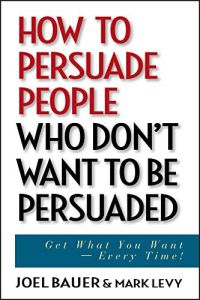Join getAbstract to access the summary!

Join getAbstract to access the summary!
Joel Bauer and Mark Levy
How to Persuade People Who Don't Want to be Persuaded
Get What You Want - Every Time!
Wiley, 2004
What's inside?
Want to entertain as well as persuade? They work together. Get a laugh. Make the deal. Sell that rabbit in your hat.
Recommendation
Most books about developing effective persuasive techniques are based on traditional debate methods and on fine-tuning ethos, logos and pathos to convince people to do things your way. Authors Joel Bauer and Mark Levy acknowledge the benefits of earlier approaches, but entertainment and fun are their attention getters of choice. The authors advocate "infotainment," adapting pitching techniques used by flamboyant non-business people, such as gamblers, carnival barkers and magicians. They may have a point. Some of their techniques, including the use of tricks and props, might help you seize an audience. (Warning for the fumble-fingered, some of these magic tricks literally require sleight-of-hand practice.) Determining if these games would work in most traditional corporate settings, or on a repeated basis, is another question. getAbstract recommends this book to particularly adventurous marketing and sales presenters. Only certifiable extroverts need apply.
Summary
About the Authors
Joel Bauer is a public speaker and "infotainer" who addresses about 200 corporate audiences annually, mostly at trade shows. Mark Levy is the founder of Levy Innovation, a marketing strategy firm. He has written or co-created four books, including Accidental Genius and Revolutionize Your Thinking Through Private Writing, which has been translated into five languages.


















Comment on this summary